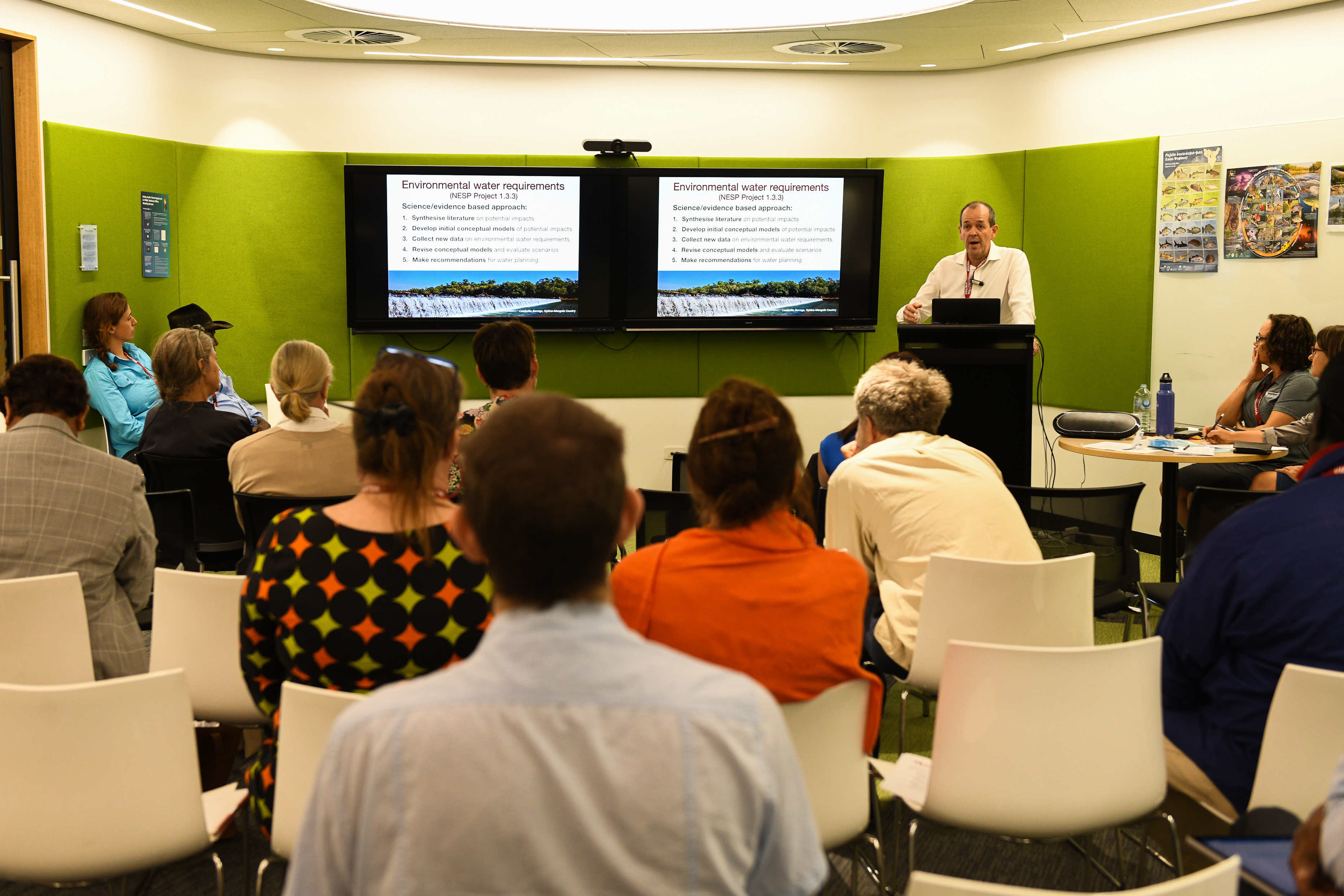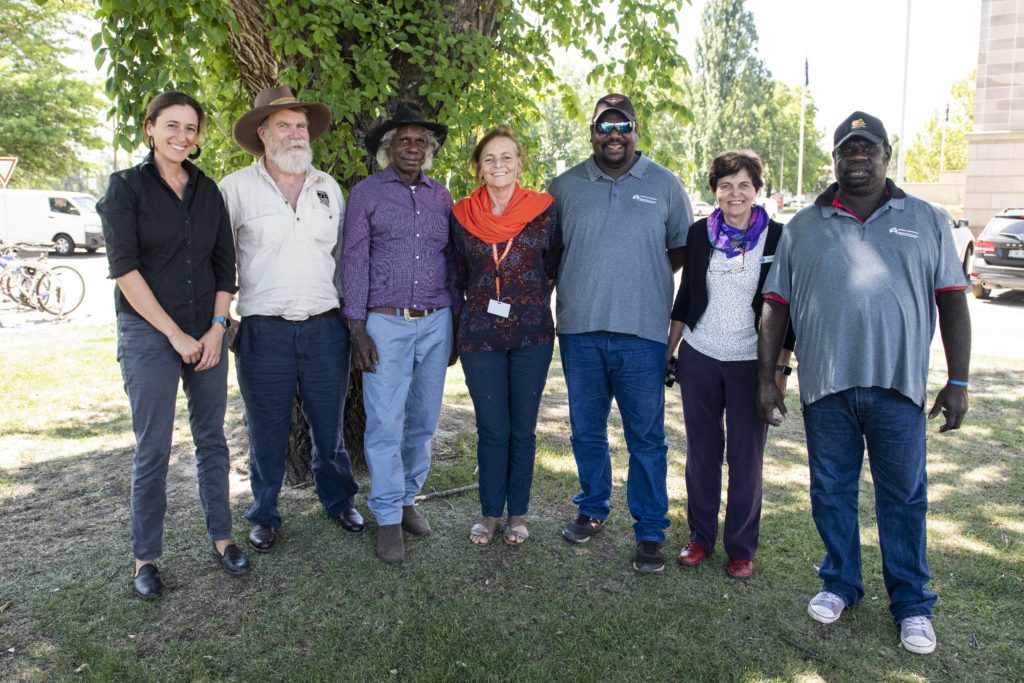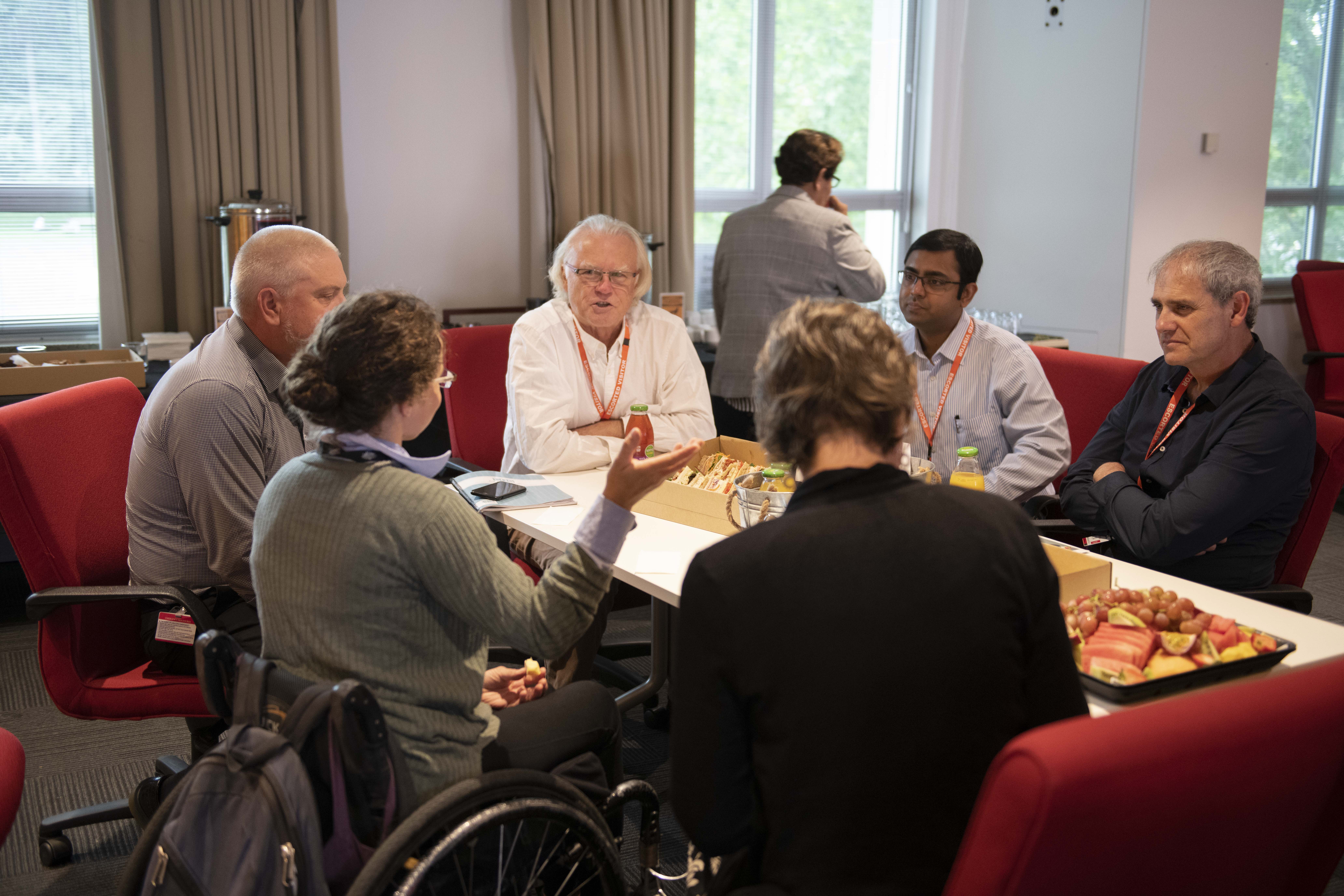5200 kilometres is a long way to go to share NESP Northern Hub research, but it’s worth the distance to bring projects to life and discuss their dimensions and findings with key users of the work.
The benefits of Hub researchers and co-researchers traveling from across northern Australia and beyond to the Department of Agriculture, Water and the Environment (DoAWE) and to the Department of the Prime Minister and Cabinet (PM&C) in Canberra, are many.
Through presentations, targeted meetings and networking, the visits deliver productive information exchanges, refined research questions, collaboration opportunities, and more targeted project outputs. They also bring new and strengthened relationships between research users and researchers, and even between different groups of users.
There are many benefits to Hub researchers traveling across Australia to present in Canberra.

Hub leader Professor Michael Douglas presents to staff from the Department of Prime Minister and Cabinet, photo NESP Northern Hub.
Banner photo: NESP Northern Hub Canberra Research Forum 2019, photo NESP Northern Hub.
Feedback we heard from staff includes:
I’ve now got a very open mind after that conversation and may need to rethink how I approach [my work]. I’ve really learnt something today.
– Department of Agriculture, Water and the Environment staff
I admire the science and knowledge that’s come into this room … it’s so wonderful to meet people who are passionate … about their science, or their Country, community or knowledge, and to come together in the room today.
– Senior Department of Agriculture, Water and the Environment staff
[The meeting] had the added side effect of bringing us together with other areas within the PM&C that we haven’t engaged with previously on land management.
– Senior Department of Prime Minister & Cabinet staff
These benefits culminate in enhanced research uptake and improved policy and program outcomes, key impacts of the Hub and NESP.
Further, less tangible impacts of Canberra visits come from Aboriginal research partners who breathe life into concepts that are hard to articulate in writing, and who enlighten staff about the human aspects of research and the links between the environment and spiritual values.
Comments from staff like “I actually [began] to grasp the significance of terms we use like cultural flows… I’ll never look at a river the same way again” attest to this benefit.

Some presenters travelled from as far away as Fitzroy Crossing in the Kimberley to share their research experiences. Dr Sarah Laborde, Peter Yates, Mervyn Street, Karen Dayman, Lloyd Nulgit, Dr Ro Hill and Gordon Smith Junior (L-R).
Visits also provide ideal opportunities for Aboriginal research partners to better understand, and speak directly with, policy area staff whose work affects Aboriginal communities.
There’s no better value item than having a close-up face-to-face relationship and contact with the group that you are trying to work with.
– Ngarinyin Traditional Owner
The people sitting here in Canberra don’t get opportunities to see the ground roots – [I] feel privileged and proud to … tell our story and tell our aspirations.
– Ewamian Traditional Owner
To achieve these impacts Hub staff worked closely with the NESP Northern Hub liaison and the NESP Knowledge Broker in Canberra and a staff member from PM&C to design the program for the visit.
Short sessions of several hours rather than full days were chosen to facilitate attendance, with compact speaking slots (10–20 mins) and clear start times so staff could come and go if needed. Presentations focused on findings, outputs and impacts to date. Some sessions included videos from where the research is occurring to bring a sense of place and richness of messaging, and to add communication diversity. Sessions also included short user ‘perspectives’ to allow those applying the research to share their thoughts on the projects, ground-truthing work and again adding variety and interest.

A working lunch immediately followed the presentation sessions – here researchers and users gathered around topics of interest to ask further questions and discuss the work in more depth.
The afternoons were reserved for more targeted meetings between researchers and research users, and agile timetabling allowed plenty of parallel sessions.
The Science Partnerships team at DoAWE were critical in many aspects of the visit including targeting invitations, and in promoting the event more generally through intranet, posters and reminders.
Please check out these highlights and this collation of follow-up resources. We’re looking forward to our next visit!